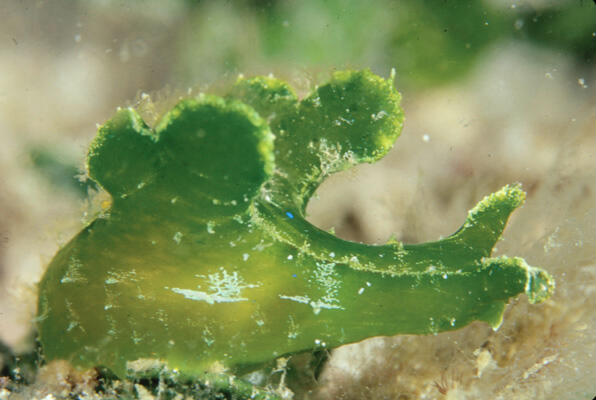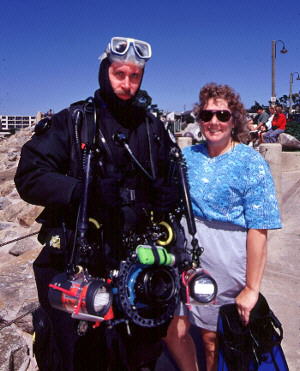 |
Scyllaea pelagica
Courtesy of Terry Schuller and Dave Reid
Scyllaea pelagica (Linnaeus, 1758)
Scyllaea pelagica is one of the oldest named species of nudibranch, being described way back in the seventeenth century, by the father of the taxonomy and systematics we follow today, Carl Linnaeus. It is also a species with one of the widest geographical distributions, being found worldwide in association with floating algal mats, primarily Sargassum.
Scyllaea pelagica is an interesting critter, as at first glance it appears to be a sacoglossid, feeding on the algal mat. One needs to look closely to see that it is a member of the Dendronotacea, and feeds on hydroids attached to the floating algae. The first giveaway is the morphology of the rhinophores, typically dendronotid, rather than rolled. Next you will notice the series of tiny papillae, or gills, set along the edges of the larger dorsal lobes. Some folks have miss-identified these as small hydroid polyps growing on the back of the nudibranch. These gills are typical of tritoniid nudibranchs (see Bill Rudman's Sea Slug Forum for a drawing made over 200 years ago by Baron Cuvier, the French naturalist and opisthobranch worker.).
Individuals of this species vary greatly in color, Terry's specimen here being a very light colored individual. Specimens from Florida are often dark brown. Specimens may reach 2 inched (50mm) in length and occur by the hundreds when found.
Its interesting to note that this species is most often collected by folks
sorting through algal mats that have washed up on the beach, and not by
SCUBA divers. Terry's photo here, is an exception, the specimen being
found on a muck covered bottom, in 46 feet of water, at the dive site
called 'anchorage at the Manta Station' in Milne Bay, Papua New Guinea.
Danville, Calif
Jan. 2002
Terry Schuller and her husband, Dave Reid owners
of Ultralight Control Systems have been in business
for 7 years selling articulated arms for underwater
cameras and housings.

|
Terry and Dave invented the pivot for the Nikonos and other cameras including the new Tetra housing. UCS arms are made of machined aluminum and are the lightest weight on the market. UCS also make adapters for all the strobes made and most of the housings made. The UCS arm system consists of two arm segments and three clamps to give you the greatest flexibility to put your strobe where you want it and not have it move. Their innovative o-ring in the end of all the balls
greatly increases the friction forces at the joint, therefore, keeping the arms where you put them. The lightweight pattern not only looks great but also allows the arms to keep their required rigidity while keeping the weight to an absolute minimum. Ultralight Control Systems (805)984-9104 Fax: (805)984-3008 |
Taxonomic information courtesy of:

David W. Behrens
Author:
Pacific Coast Nudibranchs
Send Dave mail at seachalleng@earthlink.net
|
